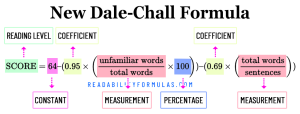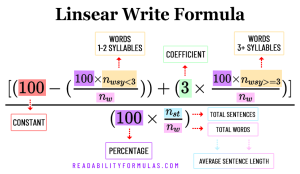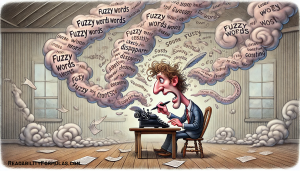 In our information-saturated world, holding readers’ attention is challenging. With so much content at their fingertips, people are choosy about what they read. To stand out, the key is readability: writing that’s clear and engaging so readers not just understand, but also remember your message.
In our information-saturated world, holding readers’ attention is challenging. With so much content at their fingertips, people are choosy about what they read. To stand out, the key is readability: writing that’s clear and engaging so readers not just understand, but also remember your message.
Understanding Readability
Readability is the craft of making text easy to read and understand—you shape information to suit the audience. In a time of dwindling attention spans and countless distractions, readability is vital for effective communication. Highly readable text allows readers to grasp the message effortlessly; as a result, they engage, remember, and act on the information.
Factors Affecting Readability
Use these tips to improve the readability of whatever you write:
1. Clarity: Clear and concise writing is the cornerstone of readability. Avoid jargon, complex sentence structures, and unclear explanations. Use simple language, short sentences, and break down complex ideas into digestible chunks.
2. Structure: A well-structured text guides readers through the content seamlessly. Use headings, subheadings, and bullet points to create a logical flow. Add an introduction, body, and conclusion to aid in cohesive comprehension.
3. Tone and Voice: Tone and voice play a role in engaging readers. Adapt your tone to match the subject matter and your audience. Use a conversational tone to make the content more relatable.
Example:
Before: “Establishing a consistent sleep schedule for infants is critical for their development and should be prioritized.”
After: “We’ve all been there—running on coffee and two hours of sleep because the baby won’t settle. Don’t worry! A bedtime routine can work wonders, and we’ve got the tips to help you get started.”
Example:
Before: “Regular exercise is essential for maintaining physical health.“
After: “Too busy for the gym? We get it. That’s why we’ve designed workouts you can crush in 15 minutes—perfect for your hectic schedule.”
Example:
Before: “Budgeting post-retirement ensures your savings last through your lifetime.“
After: “Worried about stretching your retirement savings? You’re not alone. A simple budget can help you stretch your money while still enjoying the little luxuries you love.“
4. Visual Elements: Using visuals, such as images, charts, and infographics, can enhance readability. Visuals can bedazzle the monotony of plain text; they make content visually-appealing and help convey complex information more easily.
5. Consistency: Consistency in style, formatting, and language throughout your text creates a sense of coherence. You help readers follow along without disruptions or confusion. Maintain consistency in tone, terminology, and writing style.
6. Active Voice: Active voice makes sentences more direct and engaging. Instead of saying, “Mistakes were made,” say, “We made mistakes.” Similarly, use plain language so it’s accessible to a wide range of readers. Avoid technical terms and acronyms unless necessary, and explain them when you do use them.
Crafting Readable and Engaging Texts
Now that we understand how readability influences the reading process, let’s learn some practical tips for crafting texts that engage readers:
1. Know Your Audience: Know your target audience so you can address their needs and preferences. Consider their level of knowledge, interests, and expectations. Use language and examples that engage them. Highlight common problems they face and offer solutions.
2. Use a Compelling Hook: Begin your text with a strong and attention-grabbing intro. Pose a thought-provoking question, share an intriguing anecdote, or present a surprising statistic. The opening lines set the tone for the rest of the text and determine whether readers will continue reading.
Example:
Before: “In this article, we will discuss the importance of readability.”
After: “Did you know that 80% of readers abandon a text if they find it difficult to read?”
Example:
Before: “Sleep is important for babies, and establishing a routine can help.”
After: “Exhausted from endless sleepless nights? Imagine a bedtime routine so effective, your baby snoozes peacefully while you finally binge your favorite show.”
Example:
Before: “Learning to cook can help you save money and eat healthier.”
After: “Think you can’t cook? What if I told you a $5 grocery run could make a dinner so good, your roommates would beg for the recipe?”
3. Use Storytelling Techniques: Humans are wired to connect with stories. Use storytelling techniques to supercharge your content. Use narratives, personal experiences, and real-life examples to illustrate your points. Stories that evoke emotions make content more memorable and relatable.
4. Use Headings and Subheadings: Break down your text into sections and use clear and descriptive headings and subheadings. This allows readers to skim the content easily, navigate to sections of interest, and grasp the main ideas at a glance.
5. Add Visuals: Supplement your text with relevant visuals. Use images, graphs, and diagrams to convey information visually. Visuals can increase comprehension, add variety, and create a more immersive reading experience.
6. Short Sentences/Paragraphs: Long, confusing sentences and paragraphs can intimidate readers. Aim for short and concise sentences so readers can follow them easily. Similarly, break up large blocks of text into smaller paragraphs to create visual breathing space.
7. Use Bullet Points and Lists: When presenting information in a list format, use bullet points or numbered lists. This not only improves readability but also aids in retaining information. Lists help organize content and allow readers to scan and digest information efficiently.
8. Edit and Proofread: Finally, always edit and proofread your text. Remove unnecessary words, rephrase awkward sentences, and correct grammatical or spelling errors. A polished and error-free text enhances credibility and improves the overall reading experience.
Additional Advice from Experts
“Engage your readers by creating a sense of relevance. Show them how the information you’re providing directly applies to their lives or solves their problems.” — Jennifer Ramirez, Content Marketing Consultant
“Don’t underestimate the impact of white space. Breaking up your text with sufficient margins and line spacing enhances readability and makes the content less overwhelming.” — Laura Collins, Graphic Designer
“Always put yourself in the reader’s shoes. Anticipate their questions, concerns, and areas of confusion, and address them proactively in your text.” — Rebecca Sanders, Content Strategist
“Break down complex concepts into analogies or metaphors that readers can easily relate to. This simplifies understanding and increases engagement.” — Samantha Hughes, Science Writer
Using these insights and strategies can greatly enhance the readability and engagement of your texts, helping you stand out in the digital landscape!
Scott, Brian. “How to Craft Clear and Engaging Texts in the Age of Information Overload.” ReadabilityFormulas.com, 9 Jan. 2025, https://readabilityformulas.com/how-to-craft-clear-and-engaging-texts/.







